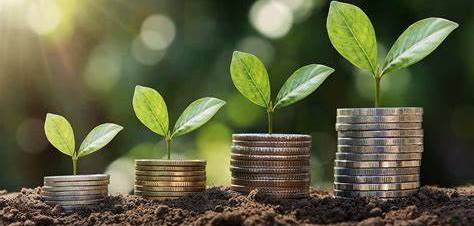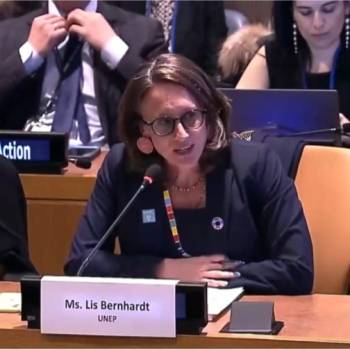
Did you know ?
It was the city of San Francisco that ignored green finance. As is often the case, California is taking the lead when it comes to implementing measures that benefit health or the environment. It was therefore in 2001 that the first green bonds saw the light of day. They were created to finance solar electricity.
At that time, the green finance movement started. It spread all around the planet for the years that followed; developing slowly but surely to become today a more than credible alternative in investment solutions. Some might think that this is an additional industry in which the green trend is rampant. Here is that finance pays into the green because it looks good in a wallet. Well no. This may have been the case before, but this milestone has definitely passed.
The world of finance is going green and that is just the start. From pale today, we can bet that it will become sparkling soon.
First of all, a bit of history through important dates ...
In Europe, in 2007, the European Investment Bank created “green bonds” under the name of “Climate awareness bond”.
In 2008, the World Bank developed its first green bond through a strategy for development and climate change. 185 countries participated in the development of this green bond. Green finance is going through a great moment in its history at this precise moment by making it possible to raise awareness about climate change and to highlight the issue and the need to support this new type of investment with investors.
Since 2008, the development of green bonds has accelerated. The G20 (grouping of the 20 most industrialized countries), the IMF (International Monetary Fund) and the OECD (Organization for Economic Cooperation and Development) officially recognized the potential of the green bond market in 2010. Therefore, the first green bonds issued by a company, by a municipality, but also the first sovereign green bonds are arriving on the market.
In 2016, the first green sovereign bond appeared in emerging countries.
The saver puts pressure. He became a decision maker. Gone are the days when the rate of return was the only indicator to consider. Now the investor wants to know what he is investing in. He wants to know what his money is going to be used for. He decided to invest usefully. He is now an eco-responsible actor aware of the power of money. So the whole sector got into motion to follow the trend. From pension funds to banks to managers, everyone is making a transition.
How to define this green finance?
It is similar to actions or financial operations aimed at fighting against global warming. It contributes to the ecological transition by means of financial support for environmental purposes. Here is an example as surprising as it is concrete to demonstrate the environmental turning point that global finance has taken.
Did you know the Rhino Bond?
Rest assured, few know him. It was born in the 2nd quarter of 2020. It was created to help the African black rhino which is threatened with extinction due to poaching. This fund, developed by Conservation Capital , is the perfect illustration of what green finance can and must do. The power of money at the service of the planet and the living.
But is it profitable you will tell me?
Of course. Green finance is not synonymous with charity. Investors have rarely had the soul of philanthropists, and seeing the world in green today will not be a game-changer. Investors are looking for yield and that's to be expected. The good news is that investing can be both responsible and profitable. In our example of the Rhino bond, the creditors of this fund will receive an interest on their loan if the rhino population living in five areas of Kenya and South Africa increases over a period of 5 years. The risk for investors would be that the rhino population would stagnate or decline. There is no doubt that they will keep a watchful eye!
Less anecdotally, we are witnessing a reorientation of public and private financial flows so that they are compatible with the climate objectives of the Paris Agreement. In fact, within the framework of this agreement, the world of finance intends to play an active role. It is about directing capital towards low carbon objectives. Even if all of its actors have no other choice but to stick to the times and seize the opportunity of the moment to shape an image that has not always been the most virtuous, we can consider that their billions will promote energy transition, fight against global warming, protect biodiversity, reduce pollution of ecosystems. And we can only congratulate ourselves on that.
Thus, for example, the bank HSBC, the largest European bank, announced that it wants to stop financing coal in the advanced countries by 2030, and in the whole world by 2040. If all large investors decide to reduce their positions in assets emitting large amounts of carbon, which could mark a major turning point in the fight against climate change.
The public authorities of each country support the green transition of finance. They are developing many help and support plans. Europe has also launched a major stimulus package, envisioning an economic recovery coated in green. Some financial specialists predict a two or three-fold increase in green bond issuance.
Of course, it would be wrong to think that everything is rosy in the world of "green bond".
First of all because its proportion in total finance is further reduced, then it lacks standards, codes and benchmarks. We still have to work to fight against “greenwashing” but the tidal wave is on. She won't stop anymore.
In the end, the company which is reorienting its environmental strategy, the saver who brings in his savings, issuers, asset managers, sources, civil society, all have decided to open the doors to green finance and to come together for a common goal: to give meaning to money.
Posted on 2021-03-17 19:13








Comments